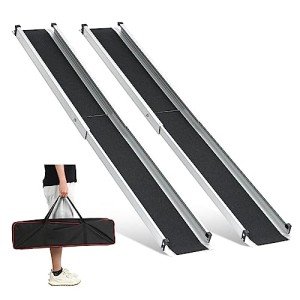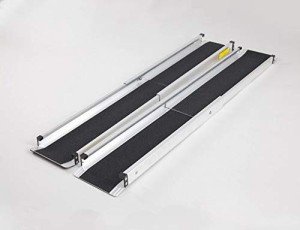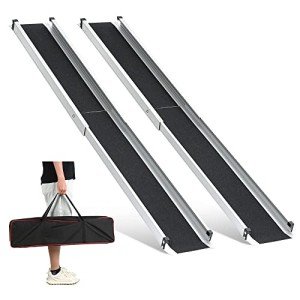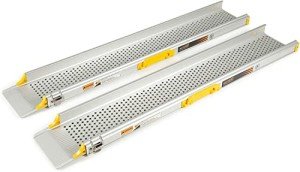In today's society, accessibility for individuals with mobility issues is of paramount importance. One essential tool that facilitates access is the telescopic wheelchair channel ramp. These ramps make it easier for users to navigate various environments, from homes to public spaces. This guide delves into the features, benefits, and purchasing considerations of portable telescopic wheelchair ramps, particularly focusing on the popular 4ft and 7ft options.
Understanding Teleocopic Wheelchair Channel Ramps
Telescopic wheelchair channel ramps are specifically designed to assist wheelchair users in overcoming elevation changes, such as stairs or curbs. Unlike traditional ramps, telescopic ramps can be adjusted in length, making them adaptable to different routines and environments.
Features of Telescopic Wheelchair Channel Ramps
Here are some key features that differentiate telescopic wheelchair ramps:
-
Adjustable Length: The most significant advantage is that they can be extended or collapsed as needed. A 4ft ramp can be adjusted to fit shorter elevations, while a 7ft ramp can be utilized for steeper inclines.
-
Portability: These ramps are lightweight and designed for easy transport. They can be folded compactly when not in use, making them convenient for travel.
-
Durable Construction: Made from strong materials such as aluminum, these ramps are built to withstand heavy weight and environmental factors.
-
Non-Slip Surface: Many models feature a textured surface for enhanced grip, ensuring safer use in various conditions.
-
Safety Features: Some ramps come equipped with guardrails or wheel stops to prevent accidents during use.
Key Benefits of Using Telescopic Wheelchair Channel Ramps
The advantages of using telescopic wheelchair ramps are numerous. Here is a list of some of the primary benefits:
-
Enhanced Accessibility: They make navigating challenging terrains like steps and curbs much easier for wheelchair users and caregivers.
-
User-Friendly: Their telescopic design allows for simple and quick adjustments. Users can modify the ramp length based on their needs.
-
Versatility: These ramps can be used in various settings, including homes, staircases, parks, and more.
-
Space-Saving: When collapsed, these ramps require minimal storage space, making them ideal for users with limited room.
-
Cost-Effective Solution: Investing in a portable ramp can save money in the long term, as it reduces the need for extensive home modifications.
Comparing 4ft and 7ft Portable Ramps
When deciding between a 4ft and a 7ft portable ramp, several factors come into play. Below is a comparison table highlighting their respective characteristics:
| Feature | 4ft Telescopic Ramp | 7ft Telescopic Ramp |
|---|---|---|
| Length | 4 feet | 7 feet |
| Weight Capacity | Up to 600 lbs | Up to 800 lbs |
| Ideal Use | Shorter elevation changes | Steeper inclines and stairs |
| Weight | Lighter (15-20 lbs) | Heavier (20-25 lbs) |
| Portability | Very portable | Portable but less so than 4ft |
| Storage Size | Compact | Slightly larger when folded |
Factors to Consider When Purchasing a Telescopic Ramp
When considering purchasing a telescopic wheelchair ramp, several factors should be considered:
-
Height of the Incline: Evaluate the height of the area you intend to use the ramp. If dealing with lower elevations, a 4ft ramp may suffice. For steeper angles, the 7ft option may be necessary.
-
Weight Capacity: It’s essential to check the ramp's weight limit to ensure it can support the user comfortably.
-
Material: Choose a ramp made of durable materials, like aluminum, that will hold up over time.
-
Usage Environment: Assess the typical conditions under which the ramp will be used. Ramps used outdoors may require additional features, such as waterproof surfaces.
-
Budget: Determine a budget based on the features needed and select the ramp that offers the best value for those needs.
Frequently Asked Questions (FAQs)
1. How do I determine the right length of ramp for my needs?
To find the right ramp length, consider the height of the incline (e.g., steps or curbs). A common guideline is to have a slope ratio no steeper than 1:12 (for every inch of height, there should be 12 inches of ramp).
2. Are telescopic ramps safe to use?
Yes, as long as they are sturdy, made of quality materials, and used according to the manufacturer's guidelines. Look for ramps with safety features such as non-slip surfaces and guardrails.
3. How much do telescopic wheelchair ramps typically cost?
The price varies based on factors such as length, weight capacity, and additional features. Generally, prices can range from £100 to £600.
4. Can I use a telescopic ramp for multiple types of wheelchairs?
Most telescopic ramps are suitable for various wheelchairs and mobility aids. However, it is essential to check weight limits and ramp width to ensure compatibility.
5. Is it easy to set up and transport a telescopic ramp?
Yes, most telescopic ramps are designed for easy setup and transport. They can be folded quickly and are often lightweight, making them user-friendly.
In conclusion, telescopic wheelchair channel ramps, particularly the 4ft and 7ft options, offer remarkable benefits for enhancing mobility and accessibility. They cater to diverse needs, whether for daily home use or while on the go. With their adjustable length, portability, and durable features, these ramps serve as an invaluable resource for individuals with mobility challenges. Ultimately, proper evaluation of specific needs and ramp features will ensure users select the best option for their requirements.







